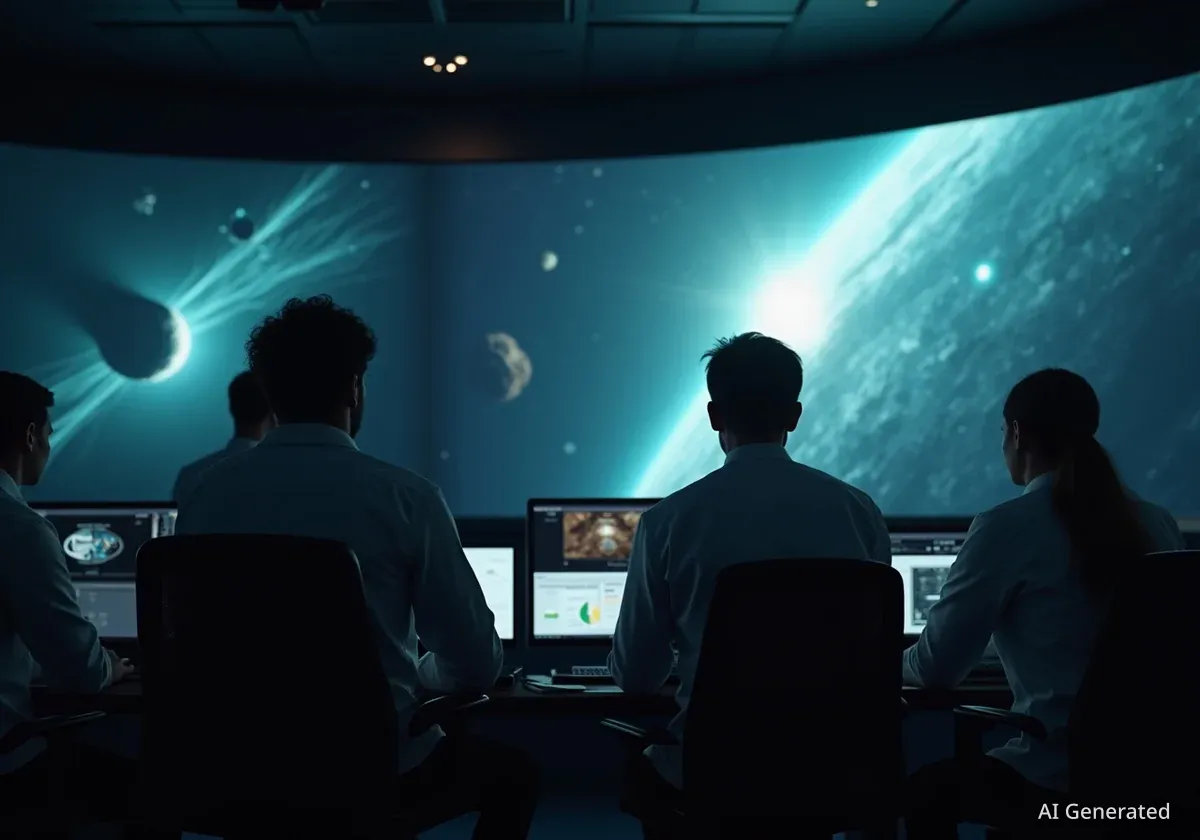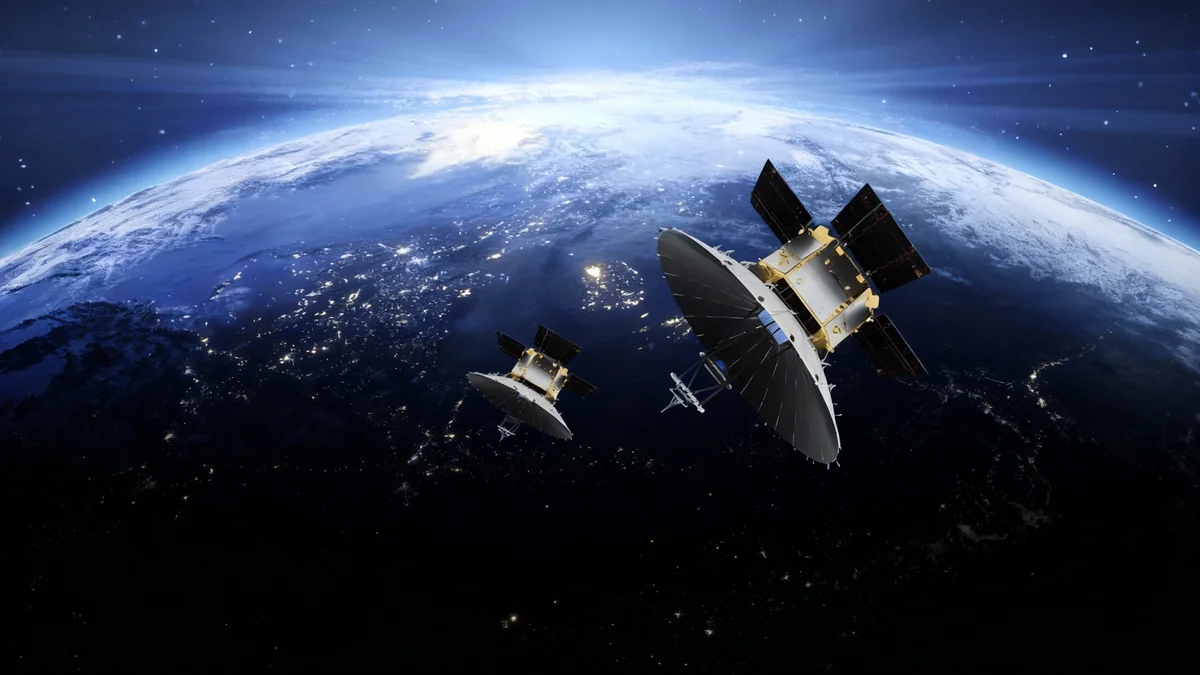The European Space Agency (ESA) is significantly expanding its efforts to protect Earth from potential asteroid impacts. Through a new proposal for its Space Safety Programme, the agency plans to enhance its ability to predict and prevent threats from near-Earth objects with a suite of advanced new technologies and missions.
Recent high-profile events, including the successful NASA DART mission and renewed interest in the asteroid Apophis, have brought the importance of planetary defense into sharp focus. ESA's strategy aims to build a comprehensive system, from detection to deflection, ensuring Europe plays a leading role in global safety efforts.
Key Takeaways
- ESA is upgrading its Near-Earth Object Coordination Centre (NEOCC) to handle a surge in data from new telescopes.
- The agency will deploy a network of Flyeye telescopes to autonomously scan the sky for new asteroids.
- A new space-based mission, NEOMIR, will be developed to detect asteroids coming from the direction of the sun, a major blind spot for ground-based observatories.
- ESA is exploring new asteroid deflection methods, including an ion-beam system, to supplement the kinetic impactor technique tested by DART.
- Low-cost CubeSat missions are being developed for rapid asteroid reconnaissance missions.
A Proactive Stance on Planetary Safety
The core of ESA's enhanced strategy is the Council Ministerial 2025 (CM25) proposal, which outlines a multi-faceted approach to planetary defense. The plan moves beyond simply tracking known objects and focuses on developing the capabilities needed to actively prevent a potential disaster.
This initiative reinforces the idea that planetary defense is a vital public service. By investing in new technologies, ESA aims to provide reassurance to citizens across Europe and contribute significantly to a coordinated international effort to safeguard the planet.
What is a Near-Earth Object?
A Near-Earth Object (NEO) is an asteroid or comet whose orbit brings it into Earth's neighborhood. While most are harmless, a small fraction are classified as potentially hazardous. Agencies like ESA track these objects to calculate their trajectories and assess any potential impact risk.
Enhancing Europe's Watchful Eye
The first line of defense is detection. A major part of the proposal involves strengthening ESA’s Near-Earth Object Coordination Centre (NEOCC), the operational heart of its planetary defense activities. The NEOCC is responsible for observing asteroids, calculating their trajectories, and assessing impact risks.
To support this, ESA is establishing a robust survey system. Key components include:
- Flyeye Telescopes: These custom-designed telescopes will autonomously scan the night sky for new asteroids. The first Flyeye is set to be deployed in Sicily, Italy, with a second planned for South America to create a global network.
- Telescope Array: In addition to the Flyeye network, ESA plans to establish an array of telescopes developed and operated by European industry to further boost discovery and follow-up capabilities.
- Advanced Software: The Centre's warning systems, known as 'Meerkat' and 'Aegis', are being upgraded with AI-based tools to process the rapidly increasing volume of data from these new instruments.
Closing a Dangerous Blind Spot
One of the most significant vulnerabilities in our current detection network is the inability to spot asteroids approaching from the direction of the sun. The glare from sunlight makes it impossible for ground-based optical telescopes to see them, as was the case with the 2013 Chelyabinsk meteor.
The Chelyabinsk Event
In 2013, an undetected 20-meter asteroid entered the atmosphere over Chelyabinsk, Russia. The resulting shockwave injured over 1,500 people and caused widespread damage. It arrived from the direction of the sun, highlighting a critical gap in Earth's defenses.
To address this, ESA is advancing the Near-Earth Object Mission in the Infra-Red (NEOMIR). This space-based telescope will be positioned to hunt for asteroids in the infrared spectrum, allowing it to spot objects hidden in the sun's glare. If funded, NEOMIR could provide advance warning for events like Chelyabinsk for the first time, with a targeted launch in the mid-2030s.
Beyond Detection: New Deflection and Reconnaissance Tools
Finding a threatening asteroid is only half the battle. ESA is also investing in missions to study and potentially redirect them. While the NASA DART mission successfully demonstrated the 'kinetic impactor' technique, its impact on the asteroid Dimorphos produced unexpected results, highlighting the need for multiple deflection options.
ESA is exploring alternative, contactless methods that may be better suited for certain types of asteroids. The Precision Asteroid Nudging (PAN) mission concept proposes using an ion-beam propulsion system. The spacecraft would direct a steady, low-thrust beam at an asteroid over a long period, gradually changing its trajectory without direct impact.
"Asteroids are diverse, and we will need multiple proven deflection methods in order to reliably protect our planet."
Furthermore, rapid and affordable reconnaissance is crucial for understanding any potential threat. The Satis mission aims to use a small, 12U-XL CubeSat to independently travel to and explore a near-Earth object. CubeSats can be developed and launched at a fraction of the cost of traditional deep-space missions, making them a potential game-changer for fast-response reconnaissance.





